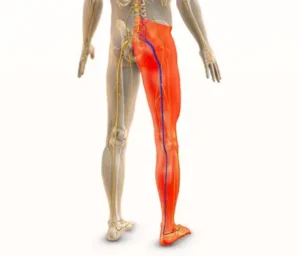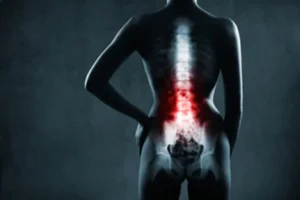Living with persistent sciatica pain 1 year after microdiscectomy can be quite challenging. This surgical procedure is successful in relieving symptoms caused by a herniated disc. Yet, some individuals may experience discomfort or even a revival of symptoms. In this blog, we will delve into the complexities of this issue.
Let’s explore the underlying causes and treatment options. Along with effective pain management strategies with Dr. Gurneet Singh Sawhney. He is one of the best neurosurgeon in Mumbai.
Through a careful evaluation process, Dr. Gurneet Singh Sawhney makes treatment plans. These plans address the specific needs of each patient. He encompasses restorative modalities varying from surgical options to rehabilitative measures.
He has extensive experience in brain and spine surgeries. It equips him with the knowledge to solve the issue of sciatica pain 1 year after microdiscectomy. His efforts empower patients to navigate their journey toward relief from this pain.
Don’t hold back on finding sciatica pain relief for persistent discomfort post-microdiscectomy. Book an appointment with an expert today!
Is It Normal to Have Sciatica Pain After Microdiscectomy – 1 Year Mark
 It’s common for some patients to experience sciatica pain even after a microdiscectomy, especially around the one-year mark. While a microdiscectomy can effectively ease the pressure on the affected nerve root, it doesn’t guarantee that all symptoms will disappear completely or that new issues won’t arise.
It’s common for some patients to experience sciatica pain even after a microdiscectomy, especially around the one-year mark. While a microdiscectomy can effectively ease the pressure on the affected nerve root, it doesn’t guarantee that all symptoms will disappear completely or that new issues won’t arise.
Factors such as the extent of the original injury, the success of the surgery, individual healing processes, and potential complications can all play a role in the persistence or recurrence of symptoms. Additionally, lifestyle factors, such as posture, activity levels, and overall physical health, can influence the recovery process.
If you are experiencing sciatica pain after a microdiscectomy, it is essential to discuss it with your healthcare provider. They can assess your condition, perform any necessary tests, and recommend appropriate treatments or therapies to manage your symptoms and promote further healing. Physical therapy, pain management techniques, and modifications in daily activities may help address ongoing discomfort.
Factors that contribute to ongoing sciatica pain 1 year after microdiscectomy include:
Recurrence of Disc Herniation: Despite successful surgery, there are a couple of risks. Such as herniated disc recurring or fragments of the disc herniating. This may lead to compression of the nerves and the return of sciatica symptoms.
- Formation of Scar Tissue: Scar tissue can form around the surgical site. It can press on the nerves, causing more sciatic pain.
- Degenerative Changes: Over time, the spine degenerates. This can worsen sciatica even after surgery.
- Incomplete Healing: Insufficient healing of the tissues can contribute to recurring sciatica pain post-microdiscectomy.
- Nerve Damage: Nerve damage during surgery can lead to long-term dysfunction. Also, it starts pain along the sciatic nerve.
- Poor Postoperative Rehabilitation: Failure to stick to post-operative guidelines can hamper healing and worsen sciatica symptoms.
- Underlying Spinal Conditions: Other spinal conditions, like spondylolisthesis or facet joint arthritis, may also be present. They can add to persistent sciatica pain.
- Lifestyle Factors: Bad lifting, being idle, and bad posture can make pain worse.
Take control of your recovery journey! Schedule an appointment today.
Pain Management for Sciatica After Microdiscectomy
Managing sciatica pain after microdiscectomy requires a multifaceted approach. It ensures effective relief and improved quality of life. One key strategy is engaging in physical therapy exercises. These are designed to strengthen supporting muscles and enhance flexibility.
Further, considering various pain medications can help relieve discomfort. These include NSAIDs or prescription medications, depending on the severity.
Lifestyle modifications are also vital components of sciatic nerve pain management. These are maintaining proper posture, and staying active. Also, refrain from doing strenuous physical activities that may worsen your symptoms.
Sciatica pain operation may be necessary in cases where conservative treatments prove ineffective. Seek guidance from experienced professionals like Dr. Gurneet Singh Sawhney. He specializes in spine surgery and neurosurgery. He offers advanced sciatica pain treatment strategies to address unique needs.
Ready to conquer sciatica pain after microdiscectomy? Connect with a professional today!
When to Consult a Doctor

- Persistent or Worsening Pain: Despite trying over-the-counter pain relievers, if your sciatica pain persists or gets worse. It’s essential to see a doctor. He will assess your condition and recommend further steps to help reduce the discomfort.
- New or Worsening Neurological Symptoms: Pay close attention to any changes in sensation or strength in your legs. Experiencing weakness or numbness is a sign to seek medical attention immediately. These changes reflect issues that a professional needs to address.
- Difficulty with Bowel or Bladder Function: If you feel any difficulty during urination, it requires immediate medical evaluation. These issues could signal nerve compression or other complications that need urgent attention.
- Severe or Debilitating Pain: If your pain becomes intense don’t hesitate to reach out to a neurosurgeon. It might limit your ability to move, work, or sleep.
Conclusion
Experiencing sciatica pain 1 year after microdiscectomy can be challenging. But, understanding the causes and exploring effective pain management strategies can improve outcomes. You can consult Dr. Gurneet Singh Sawhney. He is a prominent neurosurgeon in Mumbai with 18+ years of experience. Getting guidance and thorough treatment options customized to your individual needs is crucial. With proper treatment and support, individuals can overcome sciatica pain. By following post-operative instructions, you can achieve long-term relief.
FAQs
Can sciatica take 2 years to heal?
Yes, in some cases, sciatica can take up to 2 years to fully heal, depending on various factors such as the severity of the condition and individual response to treatment.
What to do if sciatica is not recovering?
If sciatica is not showing signs of improvement, it’s important to consult a neurosurgeon for further evaluation.
What are the 3 stages of nerve healing?
The three stages of nerve healing typically include degeneration, regeneration, and remyelination, which collectively facilitate the restoration of nerve function and sensation.
Reference link:


 Recurrence of Disc Herniation:
Recurrence of Disc Herniation: